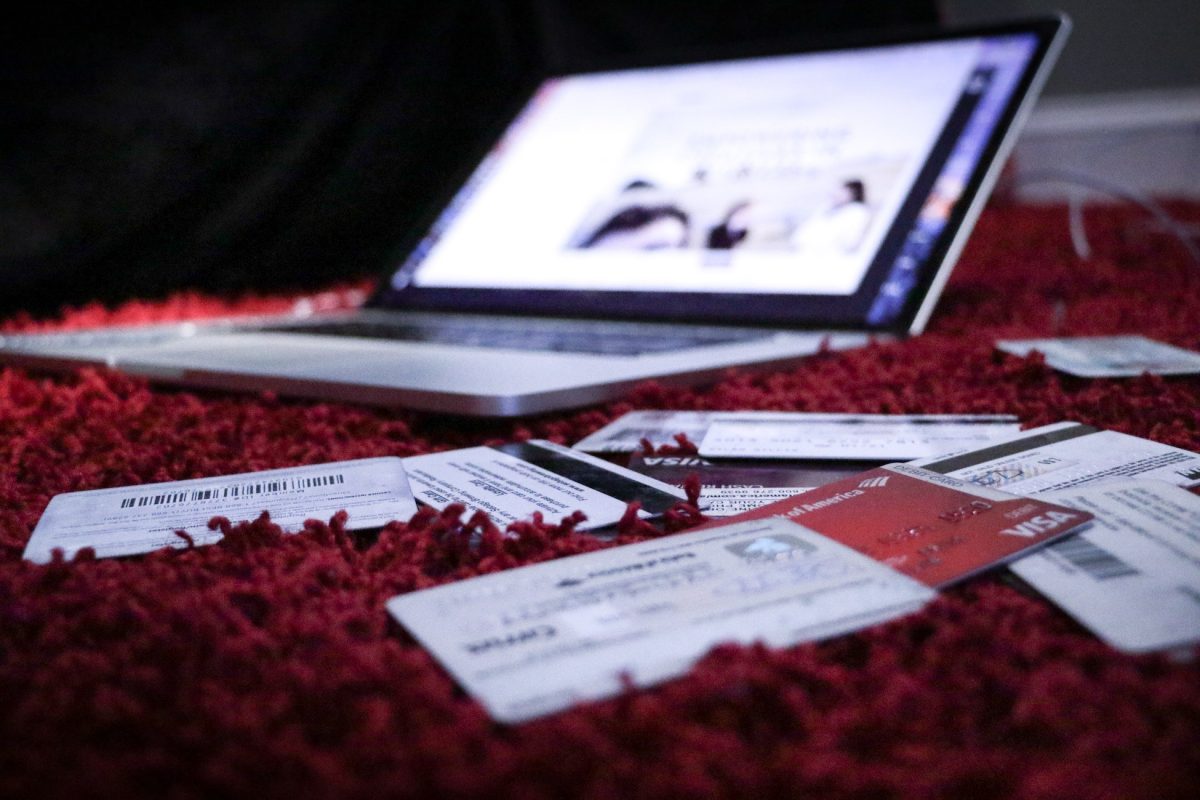Ever wondered if you could have your financial cake and eat it too—without having your credit card cry in the corner? Welcome to the intriguing realm of line of credit loans, a financial tool designed for flexibility and freedom. Picture it as your financial genie: a pre-approved pool of cash you can tap into whenever you need it, then pay back on your own terms. Whether you’re a millennial juggling side hustles, a Gen Z world-builder making bold moves, or just someone who craves financial control without the conventional rules, a line of credit loan might just be your next secret weapon.
What is a Line of Credit Loan Table of Contents
What Is a Line of Credit Loan?
How Does a Line of Credit Loan Actually Work?
Types of Line of Credit Loans: Finding the Right Fit
The Pros and Cons: Weighing the Benefits Against the Risks
Real-World Applications: When and Why to Use a Line of Credit Loan
Tips for Managing Your Line of Credit Responsibly
Case Studies: How Real People Use Lines of Credit to Empower Their Finances
Advanced Strategies: Leveraging a Line of Credit for Financial Growth
Navigating the Application Process: What Lenders Look For
Common Misconceptions About Lines of Credit
Resources and Community Support: Your Next Steps
What Is a Line of Credit Loan?
A line of credit loan is essentially a revolving credit facility that lets you borrow funds up to a certain limit, repay them, and borrow again as needed. It’s a bit like a credit card, but with lower interest rates and often fewer fees—or at least, that’s what you’d like to think when you’re budgeting your monthly expenses. Instead of receiving a lump sum that you have to pay off over a set period, you have an ongoing access to a predetermined amount of money.
Unlike traditional loans, which provide a one-time cash infusion with fixed monthly installments, a line of credit offers flexibility. Suppose you encounter an unexpected expense—a car repair emergency or the latest must-have tech gadget—but you’re not sure how much you’ll spend. With a line of credit, you have the freedom to borrow just what you need, when you need it, and only pay interest on the amount you use. Sounds like a win-win situation, right?
But wait—there’s more! Lines of credit can come in various forms, like secured or unsecured. A secured line of credit typically requires collateral, such as your home or vehicle. This collateral can sometimes fetch you lower interest rates. On the flip side, unsecured lines of credit don’t demand collateral, though they often come with higher interest rates. As with any financial product, knowledge is power; understanding the differences is key to making smart decisions.
How Does a Line of Credit Loan Actually Work?
Let’s break down the magic behind the curtain. Imagine your line of credit as a magic wallet that always has cash waiting for you—up to a certain limit. Here’s how it typically works:
Establishing Your Credit Limit
When you apply for a line of credit, the lender evaluates your creditworthiness, income, and overall financial health. Based on this, they determine your credit limit—the maximum amount you can borrow. Think of it as your financial safety net. Once approved, this limit is available for you to access as needed.
Drawing Funds
Whenever a need arises, you can “draw” money from your line of credit. This isn’t a one-time transaction: you can use portions of the line as needed, pay them back, and then borrow again. It’s the ultimate in borrowing on demand. You might use an online banking portal, a mobile app, or even a check to access your funds.
Repayment Flexibility
With a line of credit, you generally have the flexibility to make interest-only payments during the draw period, although eventually, you’ll need to pay down the principal. This interest-only payment option can be particularly attractive if you’re in a temporary cash crunch. However, once you start repaying the principal, the funds become available again—a revolving cycle that’s perfect for managing fluctuating expenses.
Interest and Fees
One of the perks of a line of credit is that you only pay interest on the funds you’ve actually used. But don’t think of it as free money; there are often fees associated with maintaining the credit line. These might include annual fees, maintenance fees, or even fees for not using your credit. The key is to understand these costs upfront so you can factor them into your budget.
In essence, a line of credit is a bit like having a financial safety net that you control—a resource to smooth out the bumps on your fiscal road. But, like any powerful tool, it comes with responsibilities. Mismanagement can lead to overspending and ballooning debts, so use it wisely!
Types of Line of Credit Loans: Finding the Right Fit
Not all lines of credit are created equal. Depending on your specific needs, financial habits, and risk tolerance, one type might be a better fit than another. Let’s take a look at the primary varieties:
Secured vs. Unsecured Lines of Credit
Secured Lines of Credit require collateral—typically your home, car, or savings account. Because the lender’s risk is minimized, these lines of credit usually come with lower interest rates and higher credit limits. The downside? If you default, the collateral is at risk.
Unsecured Lines of Credit, as the name suggests, don’t require collateral. While this means less risk to your personal assets, lenders often charge higher interest rates to offset the greater risk they assume. Unsecured credit lines are ideal for those who prefer not to tie up their property or who might not have significant collateral.
Personal vs. Business Lines of Credit
Another key distinction lies between personal and business lines of credit. A personal line of credit is tailored for individual needs—covering unexpected medical bills, home improvements, or even a spontaneous adventure abroad. Business lines of credit, on the other hand, are designed to help companies manage cash flow, cover inventory costs, or seize growth opportunities.
While the fundamental mechanics are similar, the application process, interest structures, and regulatory considerations can differ significantly between personal and business credit lines. Business owners should carefully analyze their cash flow patterns and business needs before choosing a credit line product.
Revolving vs. Non-Revolving Credit
A line of credit is known as revolving credit because it allows you to borrow, repay, and borrow again up to your limit. Non-revolving credit, by contrast, provides a fixed amount of money that you repay on a scheduled basis, with no option to re-borrow that amount. The revolving feature is what makes lines of credit so attractive for ongoing or unexpected expenses.
Home Equity Lines of Credit (HELOC)
A popular option for homeowners, HELOCs let you borrow against the equity in your home. These lines of credit typically come with favorable interest rates, and the interest paid may be tax-deductible (subject to current tax laws). However, using your home as collateral means that defaulting on payments could put your house at risk—a high-stakes version of financial flexibility.
With so many options available, it’s essential to assess your personal circumstances, risk appetite, and financial goals before jumping into a line of credit loan. When used wisely, this tool can provide a significant boost to your financial resiliency and freedom.
The Pros and Cons: Weighing the Benefits Against the Risks
Any smart financial decision involves weighing the pros against the cons. Here’s a rundown that might help you decide if a line of credit loan is right for your situation:
Advantages of a Line of Credit Loan
- Flexibility: Borrow when you need it, repay when you can. It’s as simple as that!
- Cost-Effective: You only pay interest on the amount you actually borrow, not your entire credit limit.
- Revolving Nature: Once you repay, your funds become available again, making it a handy tool for ongoing cash flow management.
- Variety of Options: Whether you’re a homeowner, entrepreneur, or individual with fluctuating expenses, there’s a type of credit line to suit your needs.
- Lower Interest Rates: Especially with secured lines or HELOCs, interest rates can be significantly lower than those on credit cards.
Disadvantages and Potential Pitfalls
- Risk of Overspending: With easy access to funds, it’s tempting to use more than you need—leading to financial strain.
- Variable Interest Rates: Some lines of credit have interest rates that can change over time, which might lead to higher costs down the line.
- Fees and Charges: Maintenance fees, annual fees, or usage fees can add up if you’re not careful.
- Collateral Risk: Secured lines of credit put your assets on the line—defaulting can lead to significant financial consequences.
- Credit Score Impact: Mismanagement or late payments can adversely affect your credit score, limiting your future options.
Like any financial product, a line of credit loan comes with its own set of benefits and risks. Knowing these can empower you to use this tool as a means of achieving financial success rather than falling prey to its potential pitfalls.
Real-World Applications: When and Why to Use a Line of Credit Loan
So, when should you consider tapping into your line of credit? The flexibility of this financial tool makes it ideal for a variety of scenarios, from the mundane to the downright unexpected.
Managing Cash Flow Gaps
Even the savviest budgeters experience temporary cash flow gaps—in the middle of a month when bills loom larger than your bank balance. A line of credit can bridge that gap seamlessly, covering everything from utility bills to rent, ensuring you never miss a payment.
Emergencies and Unexpected Expenses
Life happens. Whether it’s an emergency car repair, a medical expense you didn’t see coming, or a surprise home repair, having a financial cushion that you can dip into without the lengthy process of a new loan application is a godsend.
Opportunistic Investments and Business Ventures
For both entrepreneurs and career professionals, opportunities sometimes come knocking unexpectedly. Imagine discovering a killer investment opportunity or needing a quick infusion of cash to win a contract bid. In such cases, a line of credit can serve as a bridge to seize these opportunities without the delay of traditional financing.
Home Improvement Projects
Want to give your living space a facelift or need to renovate your kitchen? Home improvement projects often come up without a strict budget. A HELOC or personal line of credit can provide the necessary funds, allowing you to enhance your home’s value—and your quality of life—on flexible terms.
Whether it’s for daily cash flow management, seizing a sudden opportunity, or navigating through unexpected expenses, knowing when and how to use your line of credit loan can be the difference between financial stress and economic empowerment.
Tips for Managing Your Line of Credit Responsibly
Let’s face it: having easy access to cash is a double-edged sword. While a line of credit offers flexibility, it also demands discipline, strategic planning, and a proactive approach to personal finance. Here are some tips to help you navigate the world of revolving credit like a true financial ninja:
Create a Budget and Stick to It
Drafting a monthly budget is the first step toward smart credit management. Allocate funds for essential expenses, savings, and discretionary spending. By defining your limits and following through, you minimize the risk of overusing your credit.
Monitor Your Spending Religiously
In this digital age, there’s no excuse for losing track of your finances. Leverage apps and online tools that allow you to monitor your spending in real time. Regularly check your account balance and set up alerts that notify you when you’re approaching your credit limit.
Stick to a Repayment Strategy
Whether you choose to pay interest-only at first or decide to chip away at the principal regularly, consistency is key. A disciplined repayment strategy not only keeps your interest costs in check but also reestablishes the revolving nature of your credit.
Plan for Variable Interest Rates
Many lines of credit come with variable interest rates that can fluctuate over time. Factor these potential increases into your repayment plan, and be prepared to make higher payments if rates rise.
Avoid the Allure of Extra Spending
Temptation is real. Just because money is available doesn’t mean every impulse purchase is a good idea. Consider your line of credit as a financial resource for emergencies and planned expenditures, not an extension of your monthly income.
By following these strategies, you turn a line of credit from a potential financial pitfall into a robust tool that enhances your economic freedom and resilience.
Case Studies: How Real People Use Lines of Credit to Empower Their Finances
Sometimes, the best way to understand a financial tool is by hearing stories of real-life application. Here are a few scenarios that illustrate how individuals and businesses have used lines of credit to their advantage:
The Entrepreneur’s Expansion Plan
Meet Alex, a young entrepreneur with a thriving startup. When a golden opportunity arose to scale his business during a seasonal boom, Alex didn’t have the extra cash on hand. Instead of waiting until his sales revenue skyrocketed, he tapped into his business line of credit. This move enabled him to invest in new equipment and hire additional staff just in time for the busy season. By carefully managing repayments with the increased cash flow, Alex not only expanded his business but also built a solid credit history.
The Home Renovator’s Dilemma
Then there’s Jamie, a creative soul with a vision for turning an outdated kitchen into a modern masterpiece. Serving as both a savvy designer and a homeowner, Jamie needed funds for high-quality materials and professional help. Instead of taking out a hefty personal loan, Jamie opted for a HELOC. This allowed her to pay for expenses as they arose without feeling the pinch of a single large repayment. With interest only on what she used, Jamie’s renovation transformed her living space—and even boosted her home’s market value.
The Freelancer’s Financial Cushion
Finally, consider Taylor, a freelance graphic designer with an unpredictable income stream. During lean months, Taylor occasionally faced cash flow challenges that made covering monthly expenses stressful. By having a personal line of credit in their arsenal, Taylor could bridge the financial gap without incurring high-interest credit card debt. The safety net allowed Taylor to maintain creativity and focus on growing their business, confident that a reliable credit resource was always available.
These case studies demonstrate that whether you’re running a business, revamping your home, or simply managing the ups and downs of freelance life, a line of credit can offer the flexibility and security you need to succeed.
Advanced Strategies: Leveraging a Line of Credit for Financial Growth
Beyond daily expenses and emergencies, a line of credit loan can be a strategic tool in your financial growth arsenal. With careful planning and disciplined execution, it’s possible to use this product to not just manage, but grow your wealth.
Refinancing High-Interest Debt
Did you know that some people use a low-interest line of credit to pay off high-interest debts like credit cards? By transferring the balance to a more favorable interest rate, you lower your overall interest payments and free up cash for savings or investment. It’s like swapping a gas-guzzler for a fuel-efficient car—but in financial terms.
Investing in Opportunities
Sometimes, the best investment is in yourself—and that might mean borrowing a bit to seize an opportunity that promises high returns. Whether it’s funding a professional course, starting a side hustle, or investing in stocks, having access to funds on demand can open doors that might otherwise remain closed.
Building and Improving Credit
Using a line of credit responsibly can also help build your credit history. Regular, on-time repayments demonstrate financial discipline, potentially boosting your credit score. A robust credit score opens up even more doors—from better interest rates to more lucrative loans down the line.
Strategy aside, using a line of credit for financial growth requires a balanced approach. Always consider the risks, especially if the borrowed funds are earmarked for investments that come with their own set of uncertainties.
Navigating the Application Process: What Lenders Look For
Diving into the world of lines of credit might seem overwhelming initially, but knowing what lenders expect can make the process a whole lot smoother. Here’s an insider’s look:
Credit Score and Financial Stability
Lenders rely heavily on your credit score—a numerical representation of your creditworthiness. A higher score means you’re more likely to secure a favorable credit limit with reasonable interest rates. This is why maintaining good credit habits, like paying bills on time and managing debt prudently, is paramount.
Income Verification and Employment History
Lenders want to see that you have a steady income to service the loan. Be prepared to provide documentation such as pay stubs, tax returns, or bank statements. A solid employment history also reassures lenders that you’re capable of handling credit responsibly.
Debt-to-Income Ratio
Your debt-to-income (DTI) ratio is a key metric. It compares your monthly debt payments to your monthly income. A lower DTI signals that you don’t overspend, which can help you secure a higher credit limit and better terms.
Collateral (for Secured Lines)
If you’re applying for a secured line of credit, be ready to offer collateral such as property or savings. This reduces the risk for the lender, potentially rewarding you with lower rates and higher limits—though it does come with the risk of losing the collateral if you default.
Armed with these insights, you can approach the application process with confidence. Preparation is key; gather your documents, check your credit score, and have a clear plan for how you’ll use the credit.
Common Misconceptions About Lines of Credit
There’s plenty of financial folklore out there—some of it mistaken, some of it half-truths. Let’s debunk a few common misconceptions about lines of credit:
Myth 1: It’s the Same as a Credit Card
While both are revolving types of credit, there’s a key difference: interest rates. Lines of credit typically offer lower rates and more flexible terms compared to credit cards, which are notorious for their high-interest rates and rigid repayment structures.
Myth 2: You Should Max Out Your Credit Limit
Just because you have access to a large sum doesn’t mean you should spend it all. Using too much of your available credit can not only lead to high interest payments, but it may also negatively impact your credit score.
Myth 3: A Line of Credit Is a “Backup” Plan
Some people view a line of credit as merely a backup source of funds. In reality, when managed wisely, it can be a primary tool for managing cash flow, seizing opportunities, and even growing your wealth.
By cutting through these common misconceptions, you can appreciate the true potential of a line of credit loan as a flexible, empowering financial resource.
Resources and Community Support: Your Next Steps
Now that you’ve dipped your toes into the world of line of credit loans, it’s time to take the plunge with confidence. Educate yourself further by exploring trusted financial websites, blogs, and podcasts that cater to millennial and Gen Z audiences. Look for communities online where financial empowerment is a shared mission—these can be invaluable for practical tips, peer support, and even success stories that inspire you to manage your finances like a pro.
Consider connecting with a financial advisor who understands the unique challenges and opportunities of today’s economic landscape. Whether you’re navigating student loans, budding entrepreneurial ventures, or simply trying to stay afloat in a sea of expenses, professional advice tailored to your situation can make all the difference.
Finally, don’t forget that financial literacy is a continuous journey. From budgeting apps to personal finance workshops, every step you take is an investment in your future. Embrace the power of knowledge, learn from the experiences of others, and turn your line of credit into a tool for personal empowerment.
Frequently Asked Questions About Line of Credit Loans
Here are some of the most commonly asked questions about lines of credit, along with clear, down-to-earth answers that can help demystify the process and empower you to make informed decisions.
1. What exactly is a line of credit loan?
A line of credit loan is a revolving credit facility that gives you access to funds up to a predetermined limit. You can withdraw money as needed, repay, and borrow again—paying interest only on the amount you use.
2. How does a line of credit differ from a personal loan?
Unlike a personal loan, which gives you a lump sum that must be repaid on a fixed schedule, a line of credit is flexible. It lets you borrow when necessary, repay, and reuse the funds, making it ideal for fluctuating expenses.
3. Can I use a line of credit for emergencies only?
While it’s often used as a financial safety net for emergencies, many people also use it for opportunistic investments, home improvements, or bridging cash flow gaps.
4. Are secured lines of credit better than unsecured ones?
Secured lines of credit usually offer lower interest rates because they’re backed by collateral. However, if you don’t want to risk your assets, an unsecured line of credit might be more appealing, even though rates could be higher.
5. What fees should I be aware of?
Aside from paying interest on the funds you use, be on the lookout for annual fees, maintenance fees, or fees for not utilizing your credit. Make sure you read the fine print.
6. Can a line of credit improve my credit score?
Yes, if managed responsibly with timely repayments and controlled usage. This demonstrates financial discipline and can boost your credit over time.
7. What type of credit line is best for a small business?
For small businesses, both secured and unsecured lines of credit are available. The choice depends on your business’s financial health, creditworthiness, and whether you can offer collateral. Many business owners prefer a revolving credit line to manage cash flow effectively.
8. How do I apply for a line of credit?
The application process varies by lender, but you’ll generally need to provide proof of income, verify your credit score, and in some cases, offer collateral if you’re looking for a secured credit line.
9. What can happen if I misuse a line of credit?
Overspending or failing to make timely repayments can lead to accumulating debt and a lower credit score. It’s important to use this tool responsibly and stick to a defined repayment strategy.
10. Is a line of credit suitable for long-term investments?
While it can be used for various financial purposes, a line of credit is best suited for short-term needs or opportunities. For long-term investments, other options like fixed-term loans or savings strategies might be more appropriate.
Your Journey to Empowered Financial Flexibility
Embracing a line of credit loan is more than just signing up for a financial product—it’s taking control of your financial narrative. With its flexibility, ease of access, and capability to help manage unexpected expenses, a line of credit can empower you to navigate your financial challenges with confidence and creativity.
Whether you’re looking to bridge temporary cash flow gaps, seize a promising opportunity, or simply have a reliable backup for emergencies, understanding how to harness a line of credit is an essential step toward financial well-being. Just like crafting the perfect playlist for a road trip, it’s all about balance, timing, and knowing exactly what you need when you need it.
As you embark on your journey to empowered financial flexibility, remember that the key is to remain educated, disciplined, and proactive in managing your credit line. Explore the resources available, listen to advice from trusted financial insiders, and never hesitate to seek professional guidance if you need it. Your financial future is in your hands—steer it with wisdom, humor, and a bit of daring.
Welcome to a future where financial decisions aren’t stress-inducing puzzles but opportunities for creative growth. Your line of credit is not just a loan—it’s a stepping stone to a more liberated, empowered, and financially savvy you. Embrace the journey, stay informed, and let your financial freedom flourish!













